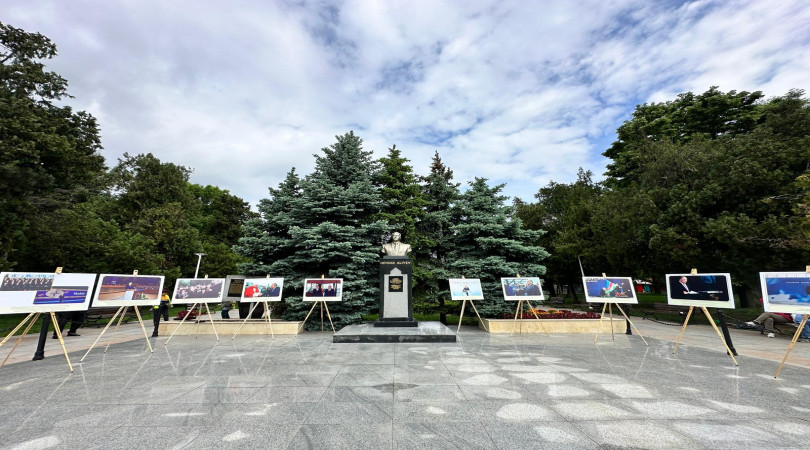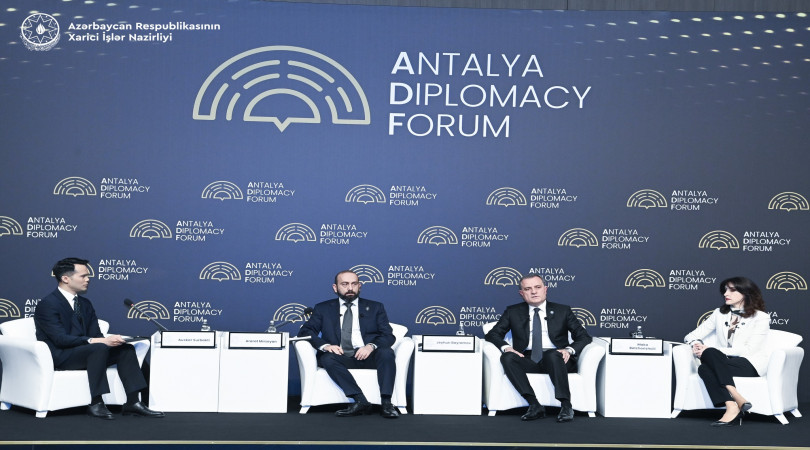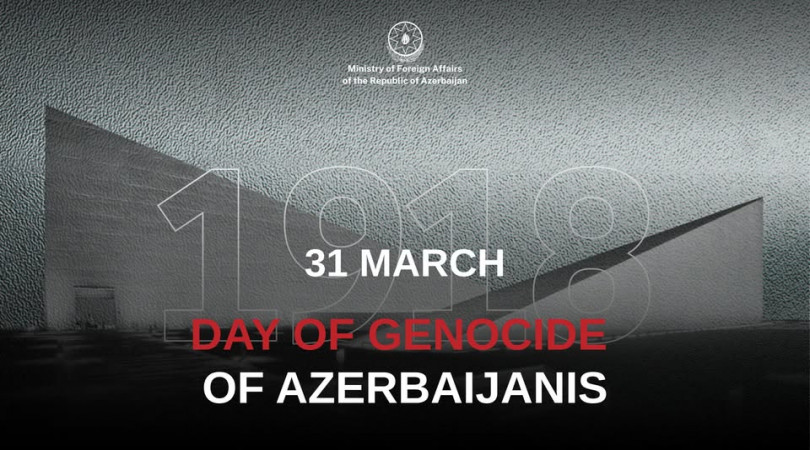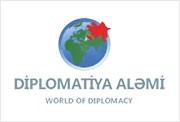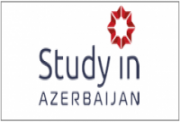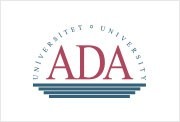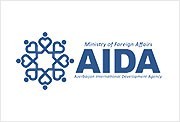Economic Power of Azerbaijan.
Article by H.E. Dr. Huseyn N. Najafov Ambassador Extraordinary and Plenipotentiary of the Republic of Azerbaijan in Romania
Global Ambassador’s Journal | Volume IV, December 2020
Energy sector
Azerbaijan has been linked with oil for centuries. A turning point in oil production was reached in the 19th century when the country was the frontrunner in the World’s oil and gas industry.
The World’s first oil well was drilled at the Bibi-Heybat field in 1846 and turned Baku into a center of world oil trade. Allowing it to exert an incredible influence on the economic development of the entire Caucasus.
The country attracted world oil investors, who gained millions in this industry. The Nobel brothers were the first to invest in oil extraction in Azerbaijan, making a significant contribution to the oil industry’s development by establishing the Nobel Brothers Oil Extracting Partnership in 1873. The Rothschild Company and Shell, led by Samuel Markus, were also involved in Azerbaijan oil production.
Azerbaijan produced some 11.5 million tons of oil and was the World’s leading oil producer in 1901. Moreover, the country generated 23.5 million tons of oil, which amounted to 71.4 percent of the Soviet Union’s production in 1941. In comparison, the output guaranteed the victory of the Soviet Union in World War II and turned oil into an essential factor of the national economy.
The country was also the World’s first offshore oil producer. Azerbaijan and the Caspian became known worldwide with the discovery of the Neft Dashlari (Oil Rocks) field 40 km offshore and 90 km from Baku in November 1949. Later on, such fields as Gurgan-Deniz, Pirallahy, and Jilov adasy were developed. The Azeri, Chirag, Kapaz, and Gunashli fields were discovered at a depth of 80 to 350 meters in the late 1970s and early 1980s.
The $7.4 billion agreement had 11 international oil companies (AMOCO, BP, McDermott, UNOCAL, SOCAR, Lukoil, Statoil, TPAO, Pennzoil, Ramco, Delta) representing seven countries (Azerbaijan, USA, U.K., Russia, Turkey, Norway, and Saudi Arabia) as contractor parties. They soon established several working structures – the Steering Committee, Azerbaijan International Operating Company (AIOC), and the Advisory Council. Those structures were given the legal power and started their activities under a special Decree signed by the President of Azerbaijan on December 02, 1994. On December 12, 1994, the Contract of the Century was ratified by the Parliament of Azerbaijan.
While many projects and economic initiatives have been put on hold for some time now, it is nevertheless reassuring to see that work on the Southern Gas Corridor is approaching completion. Azerbaijan started its journey as an energy-exporting country after signing the “Contract of Century” in 1994, together with its international partners, to exploit the Caspian Sea’s hydrocarbon resources. The subsequent developments were the natural outcome of the thoughtful energy strategy initiated by the nation’s leader, the late President Heydar Aliyev. The Baku-Tbilisi-Ceyhan oil pipeline (2005) and Baku-Tbilisi-Erzurum gas pipeline (2006) further enhanced Azerbaijan’s role as an energy producer and exporter country, whose name is also associated with large-scale regional energy infrastructure projects. Azerbaijan boasts 2.6 trillion cubic meters of gas reserves. When the existing Baku-Tbilisi-Erzurum gas pipeline did not suffice for Azerbaijan’s gas reserves’ transportation, the Southern Gas Corridor’s idea gained momentum in 2013. In that year, another significant development for the Southern Gas Corridor became the finalization of the debate over the project’s final itinerary, when Azerbaijan selected the Trans-Adriatic Pipeline (TAP) over the competing Nabucco-West project for the transportation of Caspian gas to Europe.
The 3,500 km-long Corridor consists of four segments: the “Shah Deniz-II” project, the Southern Caucasus Pipeline Extension (SCPX), the Trans-Anatolian Pipeline (TANAP), and its final portion, the Trans-Adriatic Pipeline (TAP). The Corridor passes through seven countries – Azerbaijan, Georgia, Turkey, Bulgaria, Greece, Albania, and Italy, with Italy being the final destination to receive Caspian gas. The Southern Gas Corridor’s official inauguration ceremony happened on May 29, 2018, in Baku and Phase 0 of TANAP began on June 12, 2018, in Eskişehir, Turkey. Later, Phase 1 of TANAP was inaugurated on November 30, 2019, in İpsala, Turkey. Turkey is already receiving gas via TANAP and, as of June 2020, is expected to receive 6 billion cubic meters of gas. Europe is set to accept 10 billion cubic meters of Azerbaijani gas per year, and it has already started to arrive in Albania. The Southern Gas Corridor has been fully operational by mid-November 2020. TAP is almost complete with a completion rate of over 96%; even the challenges presented by COVID-19 haven’t been able to halt the Southern Gas Corridor’s success.
At the initial stage, the Southern Gas Corridor is set to deliver about 16 billion cubic meters of gas: 6 bln m3 to Turkey and ten bln m3 to Europe. However, the project also can expand capacity, which can be increased to 31 billion cubic meters in SCPX and TANAP, and up to 20 billion cubic meters for TAP – thus doubling the latter’s capacity. Meaning that Azerbaijan possesses further gas reserves in its portion of the Caspian Sea, in its Absheron, Umid, and Babek fields, and Karabakh, Dan Ulduzu, and Ashrafi. In the future, this may provide additional volumes for the infrastructure and increase gas exports to many corners of Europe. The final stage of the Southern Gas Corridor implementation is already happening. The successful completion of TAP and the Corridor overall seems to be just around the corner, with the first gas being pumped into the pipeline’s Albanian section. With the finalization of works on TAP and the Southern Gas Corridor’s completion, on November 15, 2020, Azerbaijan will contribute to Italy’s energy security and South-Eastern European countries. Through the Southern Gas Corridor, Azerbaijan will ensure the diversification of routes and sources for natural gas while contributing to the broader continent’s decarbonization efforts. TAP also stands out as an essential link within the Southern Gas Corridor, and through its linkages to other interconnectors in Europe, such as the Bulgaria-Romania-Hungary-Austria gas pipeline (BRUA project)Interconnector Greece Bulgaria (IGB) and the Ionian Adriatic Pipeline (IAP) can open up new perspectives for other countries to benefit from new supply sources.
Besides its immediate strategic objective, the Southern Gas Corridor is also a massive infrastructure project –a multimillion-euro megaproject – and hence its name, “The Corridor.” The implementation of the Corridor became possible only through consistent and targeted international cooperation, partnerships, political will, and unity of purpose. That also means that other countries wishing to use this infrastructure that is already in place could benefit from the partnership. This kind of collaboration and cooperation eliminates competition for the more significant benefit of countries and their people. It once again testifies that the Southern Gas Corridor carries the excellent potential to contribute significantly to Europe’s energy security and sustainable development.
Natural and mineral resources of Azerbaijan
You have correctly pointed out that Azerbaijan is well-known in the World for its oil and gas. However, our country is rich with other natural and mineral resources as well.
To organize utilization of these resources by the Decree of the President of the Republic of Azerbaijan on February 11, 2015, was established “AzerGold” Closed Joint-Stock Company.
The main objective of the Company is the study, research, exploration, management of non-ferrous metal ore deposits, as well as extraction, processing, and sale of precious and non-ferrous metals, implementation of new technologies in this field, modernization and efficient use of the material and technical base, performance of other activities related to the development of the industry.
According to the financial statements of AzerGold CJSC for December 2019 compared to 2018, the Company increased the production of gold by 21.4%, while silver by 33.3 in 2019. The Company’s financial statement also revealed that, due to the price increase of gold and silver in the global market, US$86.2 million revenue, which is 48% more (US$ 27.8 million) in comparison with 2018, was made from the sale of precious metals in the reporting year. Thus, in 2019, AzerGold’s net profit escalated to US$ 4.4 million or 55% as compared to 2018 and was US$12.4 million.
Also, many foreign companies are operating in an exploration of natural resources in our country. British company “Anglo Asian Mining” seeks to start developing Ordubad gold-bearing deposits in the Nakhchivan Autonomous Republic of Azerbaijan by 2023, the Company’s press service reported on June 29, 2020.
Exploration is anticipated to take two to three years assuming full access, followed by reserve estimation and mine construction, which would take an additional one to two years. It is stated that the current exploration strategy is targeting the porphyry-style copper or copper-gold mineralization. However, the gold assets feasibility is the principal future component of the project. Moreover, it was stated that deposits of this type typically contain resources of 100 to 350 million tons at 0.30 to 0.55 percent copper content. Additionally, in the course of exploration work, the Company discovered several high-grade gold occurrences at the Ordubad contract area, which could provide production to 20,000 to 50,000 ounces per year if produced at low cost.
The Ordubad contract area covers 462 square kilometers and contains numerous deposits, six of which have been explored. Currently, Anglo Asian Mining extracts gold, silver, and copper from the Gedabey contract area at two open-pit mines (Gedabey and Ugur) and one underground mine (Gadir). The PSA type contract was signed on August 21, 1997, and provides for the development of 6 fields. Azerbaijan’s share in the contract is 51 percent, Anglo Asian Mining PLC – 49 percent. According to the agreement, 400 tons of gold and 2,500 tons of silver will be produced from these fields.
Azerbaijan is also one of the biggest iodine producers in the World.
Foreign Trade
The amendments were made to the “Preferential and simplified Rules for the movement of goods across the customs border by individuals not intended for production or commercial purposes” on August 21, 2020. According to the new Rules, the total customs value of goods imported into the Azerbaijan customs territory during each calendar month has been reduced from the equivalent of $ 1,500 to the equivalent of $ 800. Also, the total customs value of goods imported into the Republic of Azerbaijan’s customs territory for the name of the same individual through international postal services or the carrier during each calendar month has been reduced from the equivalent of $ 1,000 to the equivalent of $ 300. The decision came into force on September 22, 2020.
Foreign trade in January-September, 2020
| Name of items | Indicator |
| Turnover | 18,40 bin. |
| Export | 10,58 bin. |
| Oil and gas industry products | 9,30 bin. |
| Non-oil export | 1,28 bin. |
| Import | 7,82 bin. |
| Trade balance | +2,76 bin. |
| Number of partner countries | 178 |
| Number of participants in foreign economic activity | 36.189 |
| Number of exported products | 2.722 |
| Number of imported products | 7.235 |
Tourism in Azerbaijan
The rich historical, cultural, and natural heritage of Azerbaijan attracts visitors from all over the World. Beautiful, endemic nature, unique ancient architecture, culture, cuisine, balneology, the World’s only white oil treatment in Naftalan, salt caves in Duzdağ, and many more wonders attests to the existence in Azerbaijan of all imaginable varieties of tourism: sports, medical, cognitive, religious, hunting, exotic, beach, gastronomic, MICE. Azerbaijan boasts 9 out of 11 of the World’s climatic zones, enabling us to organize summer and winter holidays. Many local hotels offer good to excellent quality services both in the capital and in the regions. Also popular are international chains of brand hotels such as Four Seasons, Hyatt Regency, JW Marriott Absheron, Jumeirah Bilgah Beach Hotel, Grand Hotel Europe, Hilton, Radisson, Park Inn, etc. Common are ecological tours that include visits to nature reserves and parks, trekking, and climbing routes. Sandy beaches offer diving opportunities, and, what is important to note, in Azerbaijan, the swimming season starts in May.
In recent years, one of the most developing types of tourism in Azerbaijan is hunting tourism. As the country’s fauna is rich in wild animals and birds, including some endemics, there are different types of hunting in the nation currently. The most popular hunting types among foreigners coming to Azerbaijan are hunting of Dagestan goat, rabbit hunting, water birds (goose, duck, coot) hunting, woodcock hunting, etc. In recent years, falconry hunting of small animals and birds using falcons has earned popularity among tourists.
Did you know that about 400 of the World’s estimated 1000 mud volcanoes are in Azerbaijan? Moreover, Guinness World Records lists the World’s largest mud volcano as being in Azerbaijan, which measures 1 km across the base and several hundred kilometers in height.
Azerbaijan has become a ski destination with two attractive ski resorts, Shahdag and Tufandag. Shah-Dag skiing resort, built in the Northern part of Azerbaijan, is the largest skiing facility in the country, and Tufandag ski center – the other successful project which was opened in Gabala last year.
The Walled City of Baku with Shirvanshah’s Palace and Maiden Tower in 2000 and Gobustan Rock Art Cultural Landscape in 2007 were included in the UNESCO’s World Heritage List. Furthermore, along with the monuments included in the UNESCO World Heritage list, there are several Islamic heritage samples with a wide range of mosques, mausoleums, and other types of landmarks. One of them is the Bibi-Heybat Mosque, which is a historical mosque built in the 13th century. The Bibi-Heybat Mosque is one of the major monuments of Islamic architecture in Azerbaijan. Shemakha mosque is one of the oldest Muslim temples in Azerbaijan territory, in the South Caucasus, and the entire Middle East. It was built at the time of Caliph Khalid Ibn Valiyad in 743 in honor of the arrival of his brother, Muslim ibn Valiyad, in Azerbaijan. The devastating earthquake that hit the Shamakhi province, one of the largest regions in the Caucasus at the time, in 1859 and 1902 almost raised it to the ground. The historic Shemakha mosque was renovated in 1980 at the initiative and on the instruction of great leader Heydar Aliyev. The Heydar Aliyev Foundation carried out the major overhaul and reconstruction of the Shamakhi Juma Mosque as part of the “Tolerance Location: Azerbaijan” project in 2013. In 2014, Heydar Mosque, the largest mosque in the Caucasus, was opened in Baku.
Alongside historical sights, modern Baku has gained new symbols. First of all, it is the famous Flame Tower complex composed of 3 buildings. One tower is a residential building, the second one functions as a business center, and the third tower is home to the Fairmont hotel. According to the survey of skyscrapercity.com portal, the lighting of Flame Towers is considered to be the best in the World. The Towers’ surface is fully covered with LED screens that reflect different visual characters in motion, easily visible from the far corners of the city. The Heydar Aliyev Cultural Centre has gained not less fame – it is a complex building that includes a convention center, a museum, a library, and a 9-hectare park. The author of the design of the building is the famous British architect Zakha Hadid. The list can go on with other majestic architectural samples such as Crystal Hall, Azerbaijan Convention Center, the Socar Tower, etc.
As of January 01, all airlines based in 40 different countries from North America, Asia, and Europe, will automatically receive fifth and seventh freedom rights in Azerbaijan. Azerbaijan hopes this significant change to its current aviation policy will encourage tourism and visitors to the country. With fifth freedom rights, foreign carriers will now be able to stop over in Azerbaijan en route to other countries’ destinations. Meanwhile, seventh freedom rights will allow foreign carriers to fly between two foreign countries with a stop in Azerbaijan.
In 2019, 37 passenger airlines operated flights to more than 60 different Heydar Aliyev International Airport destinations. Azerbaijan’s international airports served a record number of passengers. The total passenger traffic in 2019 hit 5.56 million people.
The energy potential of Nagorno-Karabakh and surrounding regions of the Republic of Azerbaijan
As a result of the Azerbaijani lands’ occupation by the Armenian Armed Forces, the energy infrastructure of the region was destroyed. One of the numerous fabrications of the invader Armenia is that during the Soviet period, Azerbaijan ignored the development of Nagorno-Karabakh by pursuing a discriminatory policy. Azerbaijan paid particular attention to the development of Nagorno-Karabakh, and the industries operating here occupy a vital place in the Republic’s economy. The Nagorno-Karabakh was one of the most advanced economic regions of the former Azerbaijan SSR for the composition and level of development of industrial areas, production of agricultural products, and extensive energy infrastructure the requirements of that time had been established in the region.
However, with the occupation of Nagorno-Karabakh and surrounding districts by Armenia, this infrastructure was primarily destroyed or plundered. There were 20 substations with 858.6 MVA (Shusha, Khojaly, Khojavand, Lachin, Gubadli, Jabrayil, Zangilan, Fuzuli, Kalbajar, and Agdam) in 10 power grid districts of Karabakh region.
Three high electric power transmission lines – 330 kW line with the length of 81 km, 110 kW line with the distance of 690 km and 35 kW line with the spread of 615 km, as well as electric power transmission lines of 10 kW with the length of 6197 km and 0.4 kW with the distance of 8865 km, and 2435 transformers with the total capacity of 254.7 MVA existed in those territories. At the same time, 2,000 km of gas lines and 34 gas distribution facilities operated there. Once our occupied lands are fully liberated, the destroyed and plundered infrastructure will be more accurately assessed.
There is an excellent potential for the use of various energy sources in Nagorno-Karabakh and surrounding regions.
Hydropower potential: Karabakh is rich in renewable energy resources. Karabakh is one of the central regions where local water resources are generated in Azerbaijan. 25% of Azerbaijan’s local water resources, i.e., about 2 billion 560 million cubic meters of water annually, are developed in this area. Major rivers of the region such as Tartar, Bazarchay (Bargushadchay), Hakari, and other small rivers have great water energy potential. Some of them have been used since the Soviet period, but it will be possible to use a significant part in the future. There were three large hydroelectric power plants in the Republic of Azerbaijan’s occupied territories, one of which – Tartar hydroelectric power plant was built in 1976 in the Tartar region together with the Sarsang water reservoir on Tartarchay river. The plant consists of 2 hydro-aggregates, each of which has a capacity of 25 M.W. Sarsang is a water reservoir with one of the tallest dams in the country for its dam’s height (125 meters). Sarsang water reservoir provided irrigation water for about 125,000 hectares of 6 districts (Tartar, Agdam, Barda, Goranboy, Yevlakh, and Agjabadi). In 1990, the power produced by the plant per annum amounted to 81.9 million kW/hour. The plant has been under occupation since 1993.
Given that there is no necessary technical service and the equipment used is outdated, it will be required to evaluate the technical condition and then provide maintenance. Other essential energy facilities in the region are Khudafarin and Giz Galasi hydroelectric power plants. The area of the “Khudafarin hydroelectric power plant” project located 1 km north-west of Khudafarin village in Jabrail District of Azerbaijan has been under Armenian control due to occupation of Jabrail district since 1992, and the construction of the plant on the Azerbaijani side has been stopped. However, the construction of the plant on the Iranian side continued. It should be noted that the plant is planned to consist of 2 hydro-aggregates, each of which will have a capacity of 50 megawatts.
The Giz Galasi hydroelectric power plant to be built on the Araz River is planned to consist of 2 hydro-aggregates, 20 M.W., and Iran continues the plant’s construction.
The Khudafarin hydro-junction dam construction is almost complete, and the works in the Giz Galasi hydro-junction dam are nearing completion. Construction and use of Khudafarin and Giz Galasi hydro-junctions and hydroelectric power plants are regulated by the two countries’ agreement in 2016. The liberation of the Jabrayil region in October 2020, taking the state border with the Islamic Republic of Iran under full control, is fundamental in terms of the completion of the construction of power plants on the Khudafarin and Giz Galasi hydro-junctions. These projects will play a unique role in the supply of electricity and irrigate the liberated territories.
Solar energy potential: For the amount of solar radiation falling on the Earth’s surface, the southern plain of Garabagh – Fuzuli, Jabrayil, Zangilan regions are in second place after the Nakhichevan AR territory. Here, solar radiation per square meter of a horizontal surface is 1600-1700 kW·hour per year. The total solar energy potential of these areas is 3000-4000 megawatts. Once our lands are wholly liberated from enemy occupation, the accurate capacity calculation will be carried out through the installation of measuring observation stations.
Wind energy potential: In the mountainous part of Karabakh, there are vast areas with an average annual wind speed of 7-8 m/s at the height of 100 meters. According to the information by Globalwindatlas.info platform, the yearly average wind speed in the areas of Kalbajar and Lachin regions bordering with Armenia reaches ten m/s. In general, the potential of wind energy in Karabakh’s mountainous areas is estimated at 300-500 megawatts. Once our lands are entirely liberated from enemy occupation, the accurate capacity calculation will be carried out through the installation of measuring observation stations.
Geothermal energy potential: Besides, there are 3,093 m3/day thermal waters in the territory of Kalbajar district and 412 m3/day in Shusha. Possible use of thermal sources for energy purposes will be studied after the relevant territories are wholly liberated from enemy occupation.
Coal reserves: There are also deposits of coal in the Karabakh region. Thus, the Chardagli village of Tartar district has 8.5 million tons of coal reserves.
The goals for Azerbaijan in the next five years
- On December 06, 2016, the President of the Republic of Azerbaijan, Mr. Ilham Aliyev, signed a decree approving the Strategic Road Map covering national economic perspectives and strategic road maps on 11 economic sectors and consisting of 12 documents.
- Strategic Road Map on National Economic Perspectives covers short, medium, and long-term horizons. It comprises the economic development concept and action plan for 2016-2020, long-term outlook by 2025, and target outlook for the period after 2025. It covers financial objectives and principles, global trends for each area, 360-degree diagnostics of the economy, SWOT analysis of the current situation, actions to be undertaken, required investments, and critical indicators.
- Strategic Road Map on National Economic and Key Sectors of The Economy of Azerbaijan is designed to ensure the economy’s competitiveness, inclusion, and increased social welfare based on Azerbaijan’s sustainable economic development. Mobilization of investments, meeting global challenges, free competition environment, market access, and human capital development will strengthen Azerbaijan’s position in the global economy.
- By focusing on new “high-end” sectors, which will ensure sustainable development, the structure of the economy will be re-balanced through higher growth of non-tradable sector versus tradable sector, processing versus production, private business versus public business, high technology-intensive sectors versus low technology-intensive sectors, sectors based on highly qualified labor versus down qualified, high return markets versus low return markets and high value-added generating sectors versus low value-added generating sectors.
- The long-term outlook up to 2025 aims to achieve a strengthened competition capacity through value-added under the practical cooperation among all the Azerbaijani economy components, which has embarked on sustainable development.
- Protection of macroeconomic stability, improvement of the business environment, promotion of investment inflow from the private sector, and supporting the public sector represent a fundamental basis of Azerbaijan’s economic growth perspectives up to 2025.
- Macroeconomic stability – Stable macroeconomic environment forms a basis for a more diversified and sustainable economy. Macroeconomic policy choices define the form of this environment.
- Improved Business Conditions and Private Sector Investments – Till the year 2025, Azerbaijan will develop a competitive environment enabling equal access to the fourth wave of industrial revolution technologies, markets, and finance. Azerbaijan will achieve a business environment, which will create conditions supporting the revival of foreign investors’ local business and activities following global standards. Ease of business activities includes three key areas: creating conditions for investments, integration to the international value chains, and achieving global standards for business transactions.
- Social welfare – Strategic outlook for the period after 2025 provides vast opportunities for human capacity. The primary condition for the high living standard includes welfare, health, and education. After 2025 poverty will be eliminated in a targeted manner and there will be enhanced access to high-quality health services and education. Continuing efforts performed during the last decade, the state will ensure that economic growth includes the poorest and will ensure that poverty is eliminated in a targeted manner.
- Economic welfare – In 2025, the economy of Azerbaijan will be sustainable to shocks as a result of macroeconomic stability, mainly, fiscal sustainability, favorable business environment, developed infrastructure, free access to foreign markets and attract foreign investments and labor productivity in the country will be close to that of Eastern European countries.
- Target indicators – Strategic Road Map provides more than 3% annual real increase of GDP and generation of additional 450 thousand jobs by 2025. Through these measures, the following specific targets will be met.
- One of the priority spheres of ongoing economic reforms is transforming small and medium-sized enterprises into the main driving factor of the economy.
- Earlier last week, we had very transparent and democratic elections to the Parliament. A positive step as it could help modernize our country’s legislative branch and speed the economic reforms.
- Many see this development as the Parliament’s response to the President of the Azerbaijani Republic’s reform agenda, Ilham Aliyev. The ambitious reforms ahead of us can only be put in place by a new generation of dynamic, modern, and well-educated experts.
- Following his re-election in 2018, President Aliyev had started an active process of reforms. Last year the modernization efforts and structural reforms in state institutions and policies had continued at full speed. “I can say that, in general, 2019 was a year of deep reforms – political, economic, social, as well as personnel and structural transformation,” President Ilham Aliyev said.
- Notably, a significant government reshuffle took place, which led to the promotion of a younger generation to ministerial and administrative positions. Having studied at prestigious universities, such as Harvard and Sorbonne, a new generation of young politicians started to have a strong presence in the echelons of power.
- This paves the way to successfully implementing the adopted Strategic Road Maps and more rapid development of the country in all spheres in the next five years.

